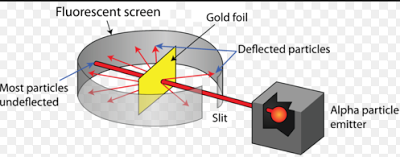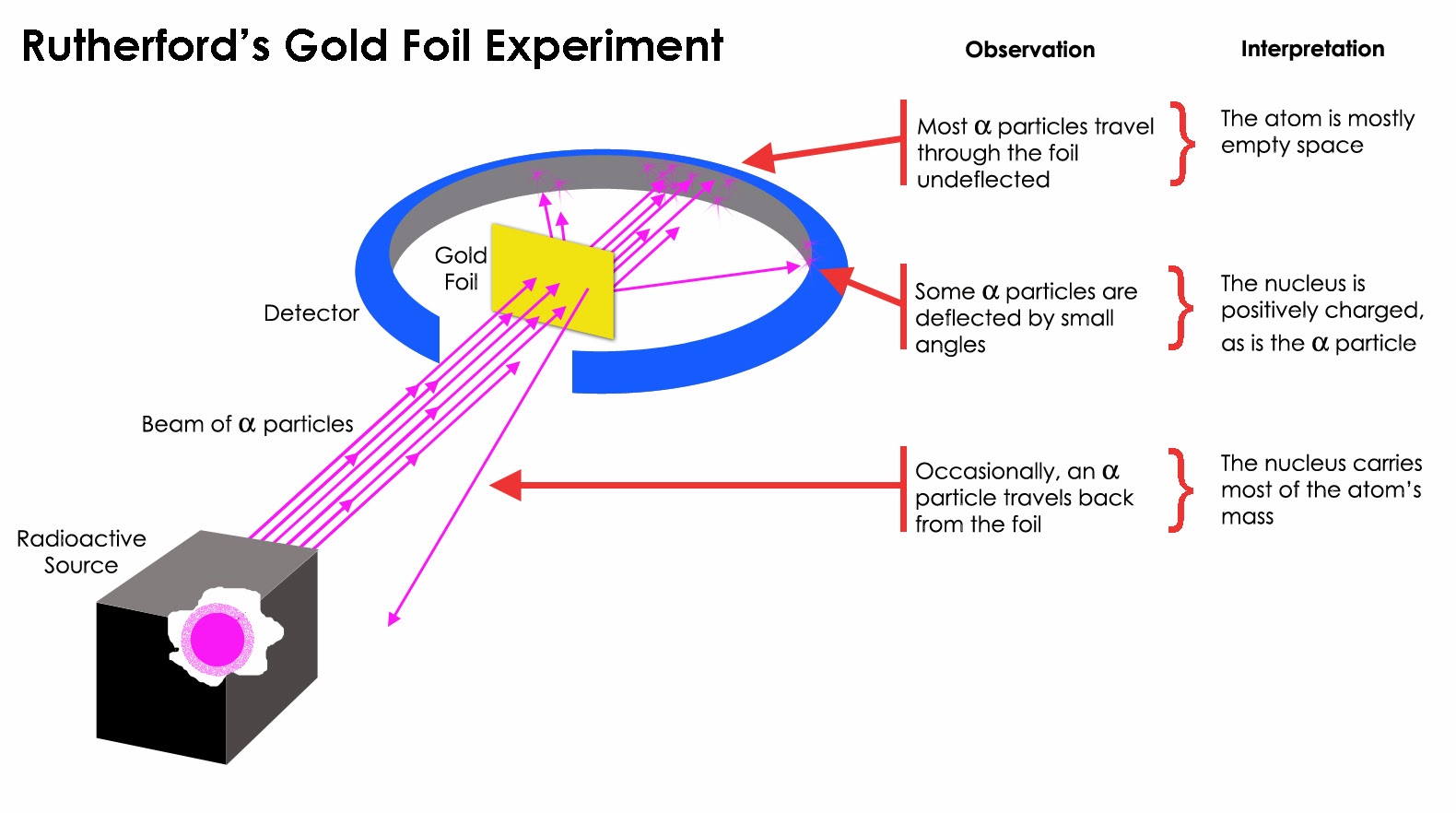


A circular zinc sulphide fluorescent screen surrounds the foil. The beam moves through space and strikes the gold foil of a few thousand atoms thick. The lead block acts as a shield and sharpens the beam. The illustration above depicts a radioactive source enclosed in a lead block liberates alpha particles. When Rutherford along with his colleague shot alpha particles, the positively charged helium nuclei, on a very thin gold foil, unexpected scattering of the particles was observed. All the experiments can be summarized using the illustration below.
#Rutherford experiment conclusion series
The experiment was not a single experiment but a series of experiments. The outcomes of the experiments debunked the idea the positive charge was uniformly distributed in the atom and demonstrated the presence of a central nucleus, where all of its positive charge is concentrated. The experiments led to the discovery of the nucleus and gave birth to the nuclear model of the atom. Rutherford further explained the revolving of electrons around the nucleus of atoms in fixed paths or orbits, though, he was unable to explain how the electrons were placed inside the atom, thus results in making the model an incomplete model of the atom.From left to right: Ernest Rutherford, Hans Geiger, and Ernest Marsdenīecause of the experiments were performed by Geiger and Marsden, it is also called as the Geiger-Marsden experiments. If electrons would fall in nucleus this should make the atom very unstable, but it is shown that atoms are very stable particles.ģ.

Consequently, Rutherford’s model was unable to explain Maxwell’s theory.Ģ. Hence, electron should fall in nucleus of an atom in less than 10 seconds because electrons will keep on losing energy. But due to the presence kinetic motion of the electrons, the radiations further cause the shrinking of the electrons. Rutherford also stated that the electrons revolve around the nucleus in their fixed paths named as orbits. According to Maxwell, electrons should release electromagnetic radiations because an accelerated charged particle has the tendency to release electromagnetic radiation. Therefore, the certain drawbacks of Rutherford’s model of an atom is given below, and it was felt that some findings still need to be done in the field of atomic structure. The model of the atom projected by Rutherford is still known as the classical model and was very much acknowledged at that time, though, later, it was proved that there were certain facets that this model was not able to explain. He stated that the atom comprises of a central charge, this is at present termed as atomic nucleus, though Rutherford himself did not use the term nucleus in his research paper and this nucleus is surrounded by a cloud of circling electrons. Rutherford thus presented his physical model for subatomic structure of particles, as a description for the amazing experimental results. It was then noted that most of the beams went straight through the foil, but a few of them were deflected. He projected that if Thomson model of atom was correct, then the beam of alpha particles would go straight through the gold foil. Rutherford proposed an experiment to use the alpha particles which are emitted by a radioactive element. Rutherford upturned Thomson’s model in 1911 with his the most famous experiment which came to known as gold foil experiment in which he discussed that the atom has a tiny and heavy nucleus which is present in the centre of an atom. Then, around 1911, a great physicist, Rutherford discovered the nucleus and proposed Rutherford’s Atomic Model. After the discovery of atom, many atomic models were projected by scientists to define the atomic structure and discovery of subatomic particles such as electron, proton, and neutron. Then, British Chemist named John Dalton restored the idea of atom in 1800 and provided suggestion for atoms. However, this idea was not further discussed for more than 2000 years. These smallest pieces of matter are named as Atomos. He also believed that it could reach a point where it wouldn’t be able to be cut further into smaller pieces. Greek philosopher Democritus was concerned to know that how a piece of matter can be cut into so many smaller pieces.


 0 kommentar(er)
0 kommentar(er)
